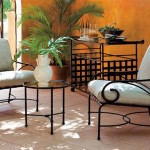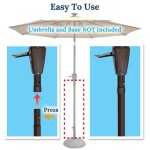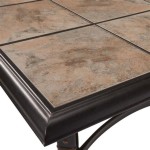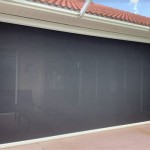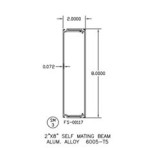Sliding Patio Doors With Internal Blinds: A Comprehensive Overview
Sliding patio doors are a popular architectural feature offering seamless transition between indoor and outdoor living spaces. The incorporation of internal blinds within these doors presents a compelling solution for light control, privacy, and energy efficiency. This article explores the features, benefits, installation considerations, and maintenance aspects of sliding patio doors equipped with integrated blinds.
Traditional window treatments, such as curtains or external blinds, can often be cumbersome with sliding patio doors. They might obstruct the door's operation, collect dust, or require frequent cleaning. Internal blinds, enclosed within the insulated glass unit of the door, mitigate these issues, providing a streamlined and low-maintenance alternative.
The growing demand for energy-efficient and aesthetically pleasing home solutions has contributed to the increased adoption of sliding patio doors with integral blinds. These doors offer a blend of functionality and design, enhancing the overall appeal of a property while simultaneously improving its energy performance.
Understanding the Mechanics of Internal Blinds
Internal blinds, also referred to as integrated blinds or between-the-glass blinds, are typically venetian or pleated blinds positioned between two panes of glass within the door's insulated glass unit (IGU). The operation of these blinds is usually facilitated by external controls, such as a sliding mechanism, a tilting wand, or a cord. These controls enable users to raise, lower, or tilt the blinds without compromising the integrity of the sealed IGU.
The sealed environment within the IGU protects the blinds from dust, dirt, and moisture, significantly reducing the need for cleaning. This feature is particularly appealing to individuals seeking a low-maintenance window treatment option. Furthermore, the enclosed blinds are shielded from damage, extending their lifespan compared to traditional blinds exposed to the elements.
The materials used in the construction of internal blinds vary depending on the manufacturer and the desired aesthetic. Common materials include aluminum, vinyl, and fabric. Aluminum blinds offer durability and efficient light control, while vinyl blinds are known for their moisture resistance. Fabric blinds, typically used in pleated designs, provide a softer aesthetic and can diffuse light more effectively.
The operational controls are designed to be user-friendly and durable. Sliding mechanisms offer smooth and precise control over the blind's position, while tilting wands allow for adjustments to the angle of the slats, regulating the amount of light entering the room. Corded systems, though effective, may present safety concerns for households with young children or pets, and are increasingly replaced by cordless options to comply with safety standards.
Advantages of Sliding Patio Doors With Internal Blinds
The integration of blinds within sliding patio doors offers numerous advantages, encompassing light control, privacy, energy efficiency, and maintenance considerations. These benefits contribute to enhanced comfort, convenience, and cost savings for homeowners.
Enhanced Light Control: Internal blinds provide precise control over the amount of natural light entering a room. By adjusting the angle of the slats or raising and lowering the blinds, users can effectively manage glare and create the desired ambiance. This feature is particularly beneficial in rooms that receive direct sunlight, enabling occupants to reduce eye strain and prevent damage to furniture or flooring caused by excessive UV exposure.
Increased Privacy: The ability to easily adjust the blinds offers a high degree of privacy. Internal blinds eliminate the need for separate curtains or drapes, providing a clean and uncluttered look while ensuring that occupants can enjoy their privacy without compromising natural light. This is especially advantageous in urban environments or properties located in close proximity to other buildings.
Improved Energy Efficiency: The sealed environment within the IGU, combined with the insulating properties of the blinds, contributes to improved energy efficiency. During the summer months, the blinds can be closed to reflect sunlight and reduce heat gain, lowering cooling costs. Conversely, in the winter, the blinds can be opened to allow sunlight to enter the room, providing passive solar heating and reducing heating expenses. The enclosed blinds also help to minimize air leakage, further enhancing the door's insulation performance.
Reduced Maintenance: Internal blinds are virtually maintenance-free. The sealed environment protects the blinds from dust, dirt, and allergens, eliminating the need for frequent cleaning. This is a significant advantage compared to traditional window treatments, which require regular dusting, vacuuming, or laundering. The enclosed design also prevents damage to the blinds, extending their lifespan and reducing replacement costs.
Enhanced Aesthetics: Sliding patio doors with internal blinds offer a sleek and modern aesthetic. The integrated design eliminates the need for bulky curtains or drapes, creating a clean and uncluttered look. The blinds are available in a variety of colors and styles, allowing homeowners to customize the appearance of their doors to complement their existing decor. The streamlined design enhances the overall architectural appeal of the property.
Child and Pet Safety: Cordless options for internal blinds eliminate the risk of entanglement, making them a safer choice for households with young children or pets. Traditional blinds with cords can pose a strangulation hazard, but internal blinds with concealed or cordless operation mitigate this risk. This safety feature provides peace of mind for families with young children or pets.
Installation and Maintenance Considerations
Proper installation is crucial to ensure the optimal performance and longevity of sliding patio doors with internal blinds. Installation should be performed by qualified professionals with experience in door and window installation. Improper installation can lead to air leaks, water damage, and operational issues.
Prior to installation, it is essential to verify that the door frame is level and plumb. Any discrepancies should be corrected to ensure that the door operates smoothly and seals properly. The door should be securely fastened to the wall studs, using appropriate fasteners and shims.
After installation, the door's operation should be thoroughly tested to ensure that it slides smoothly and locks securely. The internal blinds should also be tested to verify that they raise, lower, and tilt properly. Any necessary adjustments should be made to ensure that the door and blinds function flawlessly.
While internal blinds are generally low-maintenance, occasional cleaning may be required to remove any condensation or streaks that may appear on the glass surfaces. A mild glass cleaner and a soft cloth can be used to clean the glass panels without damaging the blinds. Avoid using abrasive cleaners or harsh chemicals, as these can damage the glass or the blinds.
The operational controls for the blinds should also be periodically inspected to ensure that they are functioning properly. If any issues are detected, such as a sticking mechanism or a broken cord, they should be addressed promptly to prevent further damage. Consult the manufacturer's instructions for specific maintenance recommendations.
In the event that the IGU seal is compromised, resulting in condensation or fogging between the glass panes, the IGU unit will likely need to be replaced. While it might be tempting to attempt to repair the seal, this is generally not a viable option, as it is difficult to achieve a proper seal without specialized equipment. Replacing the IGU unit is the most effective way to restore the door's energy efficiency and clarity.
Selecting a reputable manufacturer with a strong warranty is essential to protect your investment. A comprehensive warranty should cover both the door and the internal blinds, providing peace of mind in the event of defects or malfunctions. Review the warranty terms carefully to understand the coverage and limitations.
Factors Influencing the Cost of Sliding Patio Doors With Internal Blinds
The cost of sliding patio doors with internal blinds can vary depending on several factors, including the size and type of door, the material used in its construction, the type of internal blinds, and the complexity of the installation. A detailed cost analysis is essential to make informed purchasing decisions.
Larger doors typically cost more than smaller doors, as they require more materials and labor to manufacture and install. The type of door also influences the cost. For example, doors with multiple panels or custom designs may be more expensive than standard single-panel doors.
The material used in the door's frame and the internal blinds also impacts the cost. Vinyl doors are generally more affordable than wood or aluminum doors. Aluminum blinds tend to be more expensive than vinyl blinds, but they offer greater durability and light control. Fabric pleated blinds may command a premium due to their aesthetic appeal and light-diffusing properties.
The complexity of the installation can also affect the cost. Installations that require significant modifications to the existing structure, such as framing or electrical work, will typically be more expensive than straightforward installations. Obtaining multiple quotes from qualified installers is essential to ensure that you are receiving a fair price.
Consider the long-term cost savings associated with energy efficiency when evaluating the overall value of sliding patio doors with internal blinds. The improved insulation and light control provided by these doors can significantly reduce energy consumption, resulting in lower heating and cooling costs. These savings can offset the initial investment over time.

Between The Glass Blinds For Patio Doors Pella

Advantages Of Sliding Doors With Built In Blinds Pella Windows

Stanley Doors 60 In X 80 Double Sliding Patio Door With Internal Mini Blinds 500004 The Home Depot

Patio Doors With Built In Blinds You Should Get Them Greenmatch Co

Built In Integral Blinds Sliding Patio Doors Marlin Windows Yorkshire

Jeld Wen 72 In X 80 V 4500 White Vinyl Right Hand Full Lite Sliding Patio Door W Internal Blinds Thdjw155900245 The Home Depot

Advantages Of Sliding Doors With Built In Blinds Pella Windows

Mp Doors 72 In X 80 Smooth White Left Hand Composite Sliding Patio Door With Built Blinds G6068l002wl The Home Depot

Pros And Cons Of Blinds Between Glass Panes Through The Front Door

Between The Glass Blinds For Patio Doors Pella
Related Posts



